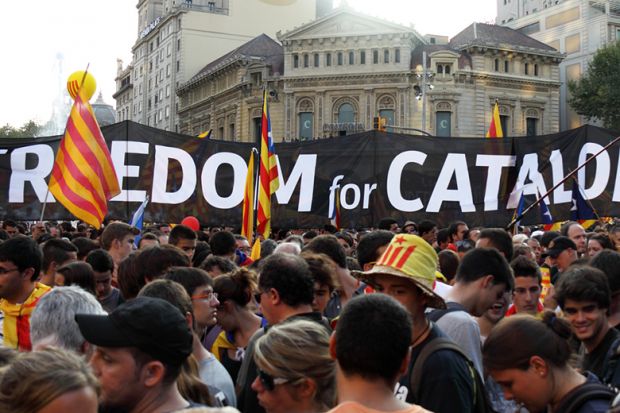The flight of Catalan leader Carles Puigdemont to Brussels at the end of last year symbolised how the internal agonies of European states have become entangled with the development of the European Union. Puigdemont wanted to appeal to opinion across Europe from the platform of its capital. Unfortunately for him, the EU member states gave him the cold shoulder. As they balanced the problems of sovereignty, integration and devolution, the last thing they wanted was to set a precedent by endorsing secession. The troubles of Northern Ireland, Scotland, Corsica, Macedonia and Belgium itself led governments to close ranks with Madrid.
The problems of the nation state, and the issue of the best unit for democratic self-expression, cannot, however, be wished away. What Paolo Dardanelli labels the “bottom-up” regional-national movements will continue to rock states that do not achieve a satisfactory centre-periphery balance through “top-down” methods. As for the EU, it is caught between its attempts to make common policies work on the one hand and populist souverainisme on the other.
Dardanelli is interested in two big questions: how attempts to “restructure” states internally have been affected by European integration; and whether it is true, as is often said, that the EU now works on the basis of “multi-level governance”. After examining the attempts at reform in six western European states since 1950, his answer to the second question is straightforward: no uniform process can be identified; the context of the individual state makes a big difference, leading some regional-nationalists to push for full independence, others to wither away and yet others to settle for specific deals on devolution.
The answer to the first question turns out to be more complex. Central governments have not usually found the European dimension helpful in handling their own separatist movements, apart from welcome subsidies from the Regional Development Funds. The movements themselves, on the other hand, have been sharply aware of the opportunities and constraints represented by the EU. Some have opposed its centralising tendencies, but more have seen it as opening a window on to a whole new order. The “Europe of the regions” idea of the late 1980s implied at least a confederal system in which regions would become stronger and existing nation states weaker. Yet this proved a false dawn, leading separatist movements to focus on improving autonomy in whatever ways local circumstances allowed.
Thus the Lega Nord in Italy gave up its hope of looking to Brussels more than Rome, moving from a pro-integration to a Eurosceptic stance. Scotland and Catalonia, in contrast, were encouraged to think that they could achieve statehood without disruption to their EU membership – hopes that have proved fanciful.
This is an academic book, making no concessions to the general reader. But it contains a wealth of invaluable material on the state-region-Union triangle, which can even spill out into international politics, as with Spain’s refusal to recognise Kosovo or the Lega’s flirtation with Vladimir Putin. What seemed a settled continent is now in flux.
Christopher Hill is Wilson E. Schmidt professor at SAIS Europe in Bologna, and emeritus professor of international relations, University of Cambridge.
Restructuring the European State: European Integration and State Reform
By Paolo Dardanelli
McGill-Queen’s University Press, 400pp, £28.99
ISBN 9780773551527
Published 12 December 2017
POSTSCRIPT:
Print headline: Big questions in little states
Register to continue
Why register?
- Registration is free and only takes a moment
- Once registered, you can read 3 articles a month
- Sign up for our newsletter
Subscribe
Or subscribe for unlimited access to:
- Unlimited access to news, views, insights & reviews
- Digital editions
- Digital access to THE’s university and college rankings analysis
Already registered or a current subscriber? Login







